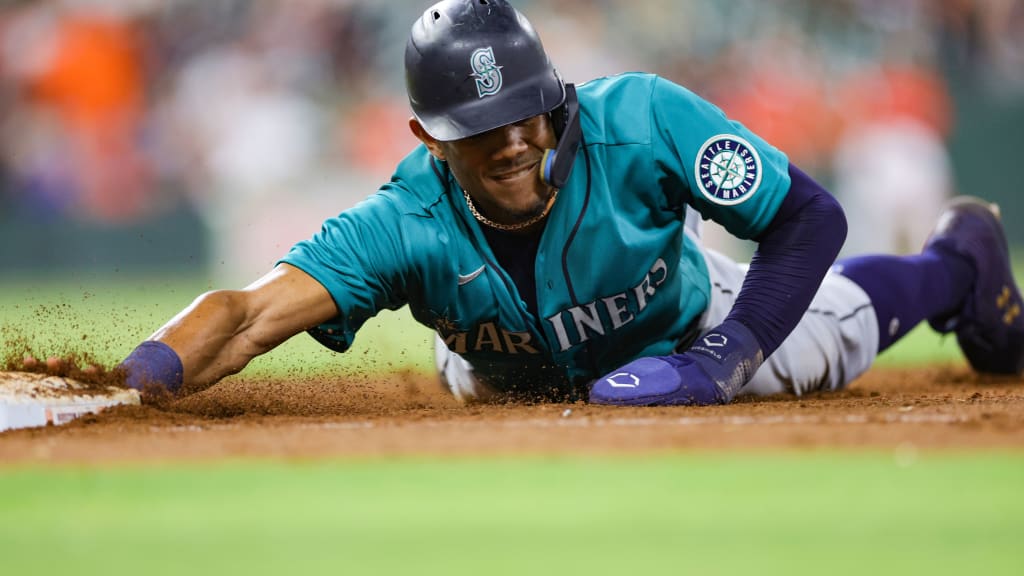
This story was originally published during the 2022 season, but we are resurfacing it in light of the announced rule changes for 2023.
The score was tied in the second inning of a Single-A game between the Lake Elsinore Storm and the Visalia Rawhide last summer, and Max Ferguson had just drawn a one-out walk. Ferguson, a Lake Elsinore infielder who was leading all of Minor League Baseball in stolen bases, took his customary lead off first base, daring to swipe yet another bag.
Visalia pitcher Adrian Del Moral did what pitchers for generations have done when a speedster like Ferguson drifts away from first. The right-handed Del Moral tried to keep the fleet-footed Ferguson honest with a pickoff attempt, and Ferguson slid back safely.
Then, in a decision only notable now because of a wrinkle recently added to the rulebook, Del Moral tried to pick off Ferguson again.
Big mistake.
That was Del Moral’s second of two permitted pickoff attempts during that particular plate appearance -- the limit put in place at all full-season Minor League levels in 2022, in conjunction with the pitch timer.
“I don’t think the [Visalia] coaching staff was very pleased,” Ferguson said later with a laugh, “that he [tried a pickoff move] a second time.”
When Del Moral failed to nab Ferguson that second time, he set off a sequence of unfortunate events for Visalia. Ferguson swiped second on the next pitch. And because the pickoff limitation lasts for the entirety of the plate appearance, Ferguson felt comfortable taking another big lead at second. Del Moral stepped off the rubber a third time and, per the rule, was charged with a balk. Ferguson automatically advanced to third base, then scored on a sacrifice fly.
Lake Elsinore took the lead in an eventual win without so much as a base hit.
And the pitch timer-oriented rules had earned the assist.
When we talk about speed with regard to the pitch timer, which is coming to MLB in 2023, we are typically talking about the pace of game. In the 2022 Minor League season, the pitch timer cut the average game time by 25 minutes.
But the pickoff/step-off rule paired with the pitch timer also injected speed of a different sort into MiLB. In 2021, an experimentation with pickoff and step-off limits at the A-ball level and larger bases at the Triple-A level contributed to a rise in both stolen-base attempts and the stolen-base success rate.
In 2022, with the mound disengagement limits, pitch timer and bigger bases imposed across the full-season Minor Leagues, the uptick in action on the basepaths continued:
YEAR: SBA/G (SB%)
2019: 2.23 (68.2)
2021: 2.52 (75.7)
2022: 2.81 (78)
No MiLB season in 2020 due to pandemic.
Theft threats like Ferguson took more chances on the basepaths and showcased a skill set that has become diminished in the modern Major Leagues.
“I don’t want to say it’s a lost art,” said Ferguson, who was successful on a staggering 61 of 66 stolen-base attempts in 114 games across three A-ball levels in 2022. “But you don’t see it as frequently [in the big leagues] as you did a long time ago.”
In 2022, Ferguson and others set a template for what we might see now that the pitch timer has gotten the call to the bigs.
Here’s everything you need to know about why the stolen base has been stolen from us, and how the pitch timer could bring it back.
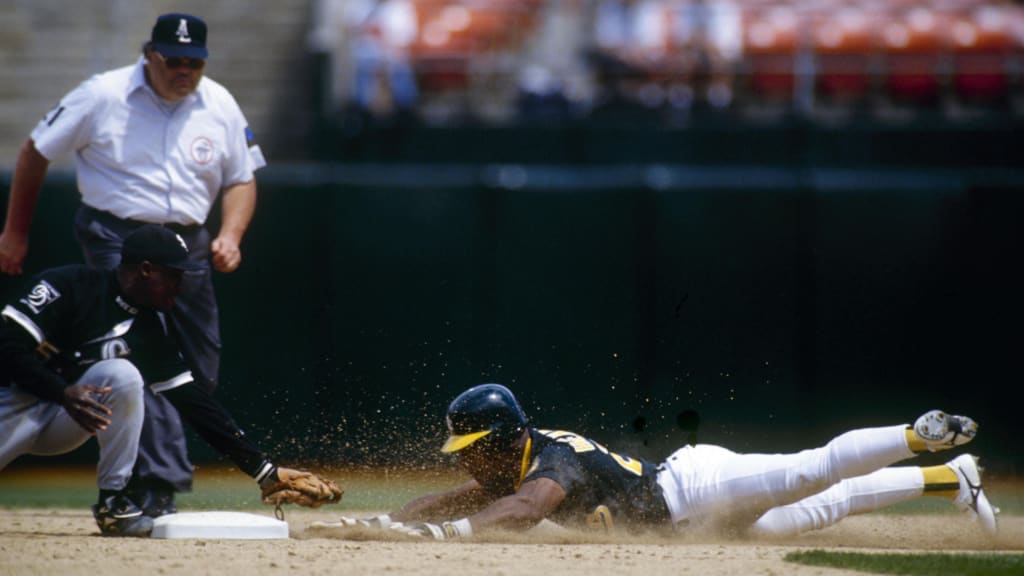
1. MLB teams have run away from the running game.
Rajai Davis was one of the premier base stealers of his era. Between his 2006 debut and his 2019 retirement, he swiped 415 bags. Only Jose Reyes (425) stole more bases in that span.
But while Davis’ prime years weren’t all that long ago, the league in which he ran amok has changed a lot in a short time.
Consider that, in 2010, Davis was one of three players (along with Juan Pierre and Michael Bourn) to notch at least 50 steals – a benchmark that has not been reached since 2017 (Billy Hamilton and Dee Strange-Gordon). In that 2010 season, five other players (Carl Crawford, Brett Gardner, Chone Figgins, Ichiro Suzuki and Melvin Upton Jr.) had at least 42 steals apiece.
Yet in 2022, only one player reached 40 steals (the Marlins’ Jon Berti had 41). Only five reached 30.
“When I came up, players were getting paid for stolen bases,” Davis said. “That’s the big motivator. And you have to train to steal bases, because stealing bases will beat up your body. If you’re not trained, you’re not going to last.”
Players have not been as motivated to run, and teams have not been as inclined to run. A greater focus on analytics by front offices over the years has contributed to a greater understanding of the value of an out. Generally speaking -- and this number varies on the overall run-scoring environment -- if runners can’t successfully convert, at minimum, 75% of their attempts, teams don’t want to risk it.
That’s reflected in the numbers. In 2021, the full-season rate of 0.60 stolen-base attempts per team game was the lowest since 1964 (0.58). In 2022, it rose to 0.67, but even that rate marked a 45% decline from the live-ball era peak of 1.21 stolen-base attempts per team game in 1987.
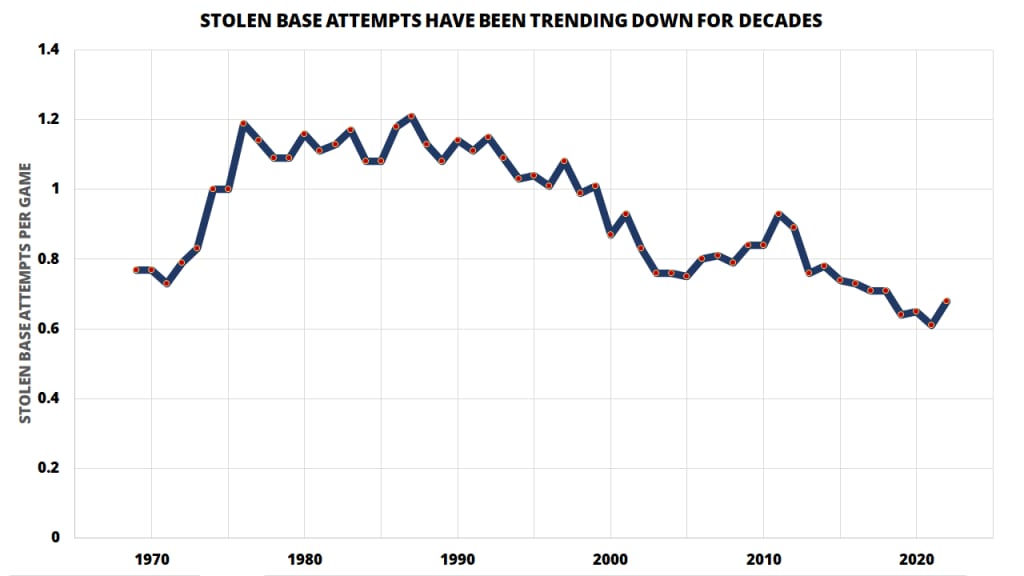
The reduction in steals saddens Davis.
“This is one of the most exciting plays in the game,” he said. “That’s one thing I would constantly hear as a player. ‘Man, Rajai, when you get on first, everyone in the stands knows you’re going to steal, but they don’t know which pitch.’ That anticipation was a great thing. That brings great energy into the ballpark.”
Davis, who now serves as MLB’s senior director of on-field operations, isn’t the only one who feels this way.
“In our fan data, when we ask, ‘What is your favorite in-game event?’” said Reed MacPhail, MLB’s vice president of league economics and operations, “stolen bases are the number one response. Rather than bigger, stronger players and more home runs, most fans prefer to see faster players and more athleticism on the field.”
They also want less dead time between pitches. Hence, the arrival of the pitch timer.
But why is the timer married to pickoff/step-off limits?
Quite simply, because it doesn’t work without them.
2. A loophole thwarted past pitch timers.
Back in 2015, Minor League Baseball introduced a 20-second pitch timer at the Double-A and Triple-A levels.
And it worked!
For one season.
After a 10-minute reduction in the average game time in Double-A and a 12-minute reduction in Triple-A in that 2015 season, game times crept back up in the ensuing years. Not even a 2018 change to a 15-second timer could permanently repel the plodding pace. By 2021, average game times at both levels were longer than before the pitch timer was introduced. And as you can see below, those game times have taken a clear drop with the current pitch timer in place.
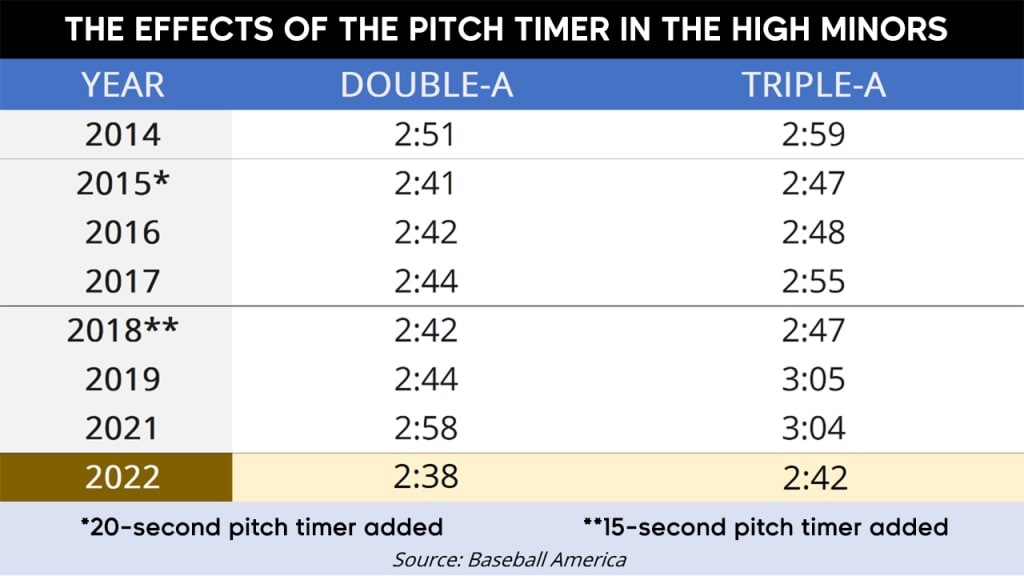
The problem was that there was nothing in the rules to prevent pitchers from stepping off the mound to reset the timer whenever they wanted. In the end, this well-intentioned technology aimed at improving pace actually managed to slow it.
So when MLB experimented with an assortment of different rules at different Minor League levels in 2021, it made sure to put the pitch timer in a league -- the California League (then known as Low-A West) -- in which pitchers were being limited to two pickoff attempts per plate appearance.
It worked in 2021 in the California League, where average game times fell from 3:02 to 2:41. And it worked again in 2022 across the Minor Leagues, where pickoff attempts decreased in number and increased in intensity.
3. Pickoff limits create a new tension.
The rule used across the Minors in 2022 is as follows: The pitcher can step off the mound or attempt a pickoff twice during a plate appearance without penalty. If the pitcher successfully attempts a third pickoff attempt, the runner is out. If the pitcher unsuccessfully attempts a third pickoff attempt, the runner automatically advances on a balk.
(This same rule will be in place in MLB in 2023. However, in the big leagues, the “disengagement limit” will reset if a runner advances during the plate appearance.)
Interestingly, MLB research found that, at the big league level, less than 2 percent of plate appearances with a runner on base include three or more pickoff attempts. So the rule might not be as disruptive as one would assume.
But there’s no doubt that it impacts the psychology of both pitcher and runner.
“It definitely adds a wrinkle,” Ferguson said. “If you’re not a burner, you’re still not going to run as often. But if you’re more aggressive, you might take a chance on them not trying to pick you off.”
In the Minors, some runners were evidently a bit too aggressive, perhaps developing a false sense of security when a pitcher had attempted two pickoffs. When running on a pitcher that had not attempted any pickoffs, they were successful 81.4% of the time. When running on a pitcher that had made two attempts, they were only successful 65.8% of the time.
“With this rule,” said MacPhail, “you turn the pickoff attempt from what most fans rate as the most boring event in a baseball game and turn it into an event that carries real intrigue.”
From the pitcher’s perspective, the pitch timer eliminates the ability to come set and then hold for an unlimited amount of time. But that doesn’t mean he is completely powerless. Pitchers can use the timer in their peripheral vision to vary their hold times and keep runners guessing. And they do still have some time to work with.
“If the batter gets in the box at 11 or 10 seconds and the pitcher is holding me for six or seven seconds, that’s uncomfortable,” Ferguson said. “A really calm pitcher can throw off your timing.”
And lest there be any misconception that runners can just take off as the pitch timer strikes zero, don’t forget: There is nothing stopping the pitcher, in that situation, from throwing to the base instead of the plate.
So the pitch timer/pickoff limits are forcing a generation of pitchers to be more mindful of controlling the running game.
“I know on our team, our pitchers are throwing in a lot more slide steps than in the past,” Ferguson said. “[In the past] most guys were not worried about being 1.5 [seconds] to the plate. Now, there are more guys trying to be 1.25.”
Still, on measure, the new rules have unquestionably given an advantage to the runner.
“This is why Rickey Henderson and Vince Coleman were so successful,” Davis said. “They knew how to steal, but they also knew the pitchers. They knew when pitchers were going home as opposed to going to first. So if you know that in advance, when the pitcher is going home, you can get a great jump.”
And in their bid to steal bases, runners will also be subtly assisted by the bases themselves.
4. Don’t forget those bigger bases.
Let’s be clear here: When MLB began experimenting with larger bases -- an increase from 15 square inches to 18 square inches -- at Triple-A in 2021, the primary goal was safety, not steals. With more room for players to operate around the bases, there was a decrease in the severity of base-related injuries.
But yes, there was also a small uptick in basepath activity, too. Attempts went up 0.1 per game, and the success rate improved by about 1%.
In 2022, the bigger bases were used at all Minor League levels. And in 2023, they will debut in the Majors.
A subtle change. But not nothing.
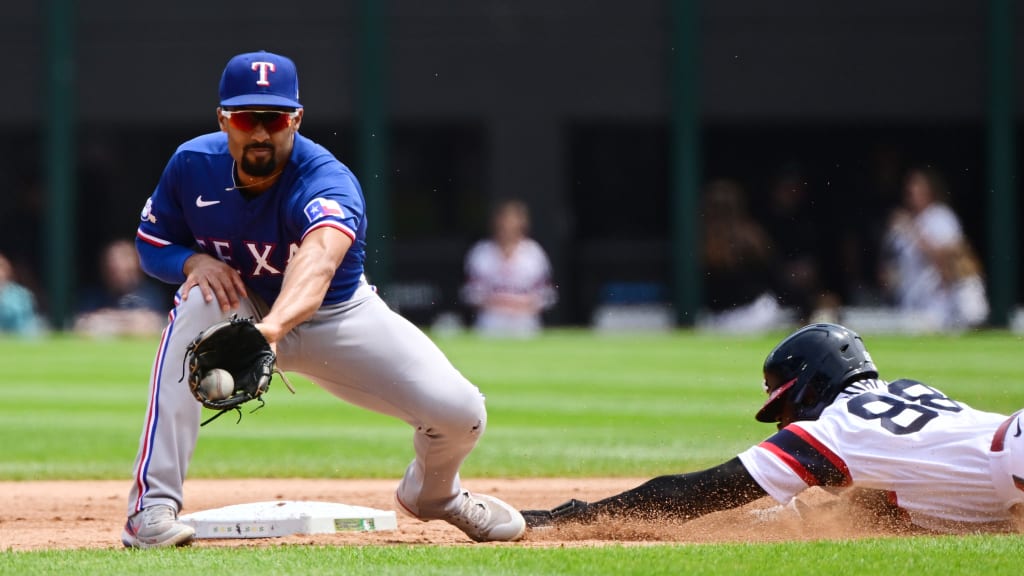
5. So, what are we speeding toward?
We can safely assume that the pitch timer -- and a shortened distance between bases -- will have an impact on baserunning.
“It will reward players that obviously can steal bases,” said Brewers manager Craig Counsell, “and it will put all pitchers in a little bit of a strategy disadvantage with these guys.”
The question, of course, is: How much? Will a reduction in risk encourage teams to give more runners the green light? Will improved stolen-base totals be rewarded in free agency and arbitration, prompting players to devote more attention to the art of the steal and the training it takes to be great at it?
Only time will tell. But what happened in MiLB in 2022 gives us a window into what the future might look like in MLB.
Consider the average number of stolen-base attempts per MLB game by recent decade:
1980s: 2.27
1990s: 2.13
2000s: 1.63
2010s: 1.55
2020s: 1.25
MiLB games saw a 26% increase in steal attempts in 2022 compared to 2019 since the pitch timer went into effect. And while Minor League games traditionally feature more base stealing than Major League games, we can probably assume something in the range of a 25% increase if these rules come to the Majors. If that happens, we’re looking at close to 1.7 steals per game.
That would bring MLB back somewhere in between the 1990s and 2000s levels, without reaching the fun-but-historically-anomalous 1980s.
“I think, so far, we have found a sweet spot,” MacPhail said. “A combination of rule changes that encourage basestealing in a manner that fans will respond positively to, without making it so difficult for pitchers to hold runners that we veer beyond the level of stolen-base activity that we have seen in the last couple of decades.”
Davis estimated that, if these rules had been in place in his career, he would have had at least 100 more stolen bases.
“What [the pickoff limit] does is it eliminates doubt,” Davis said. “The less doubt you have of stealing a base and the more faith you have in stealing that base, you can really take advantage.”
Ferguson sure has. It took him just 30 games in the 2022 season to exceed his stolen-base total in 114 games in his entire collegiate career at Tennessee.
“There was one week where I had like 10 stolen bases,” he said. “I’ve always been a pretty good basestealer, but now I have more confidence in it.”
Given what we’ve seen in MiLB, we can confidently predict that the pitch timer will speed up MLB games in more ways than one.
